Abstract
Key pecking by pigeons was reinforced with food under second-order schedules with fixed-ratio units. A constant total number of key pecks was required for reinforcement under each condition, but the size and, inversely, number of fixed-ratio components were varied. The total response requirement of 256 pecks was divided into fixed-ratio units of 128, 64, 32, 8, and 2 responses. A brief stimulus, which always preceded food reinforcement, was presented upon completion of each fixed-ratio unit. Under most conditions, the pattern of within-unit responding was typical of that under simple fixed-ratio schedules. Overall response rate was an inverted U-shaped function of component size. That is, response rates were highest under moderate sized units (fixed ratio 128 and 64). This relationship is consistent with previous determinations of rate as a function of fixed-ratio value for simple fixed-ratio schedules.
Full text
PDF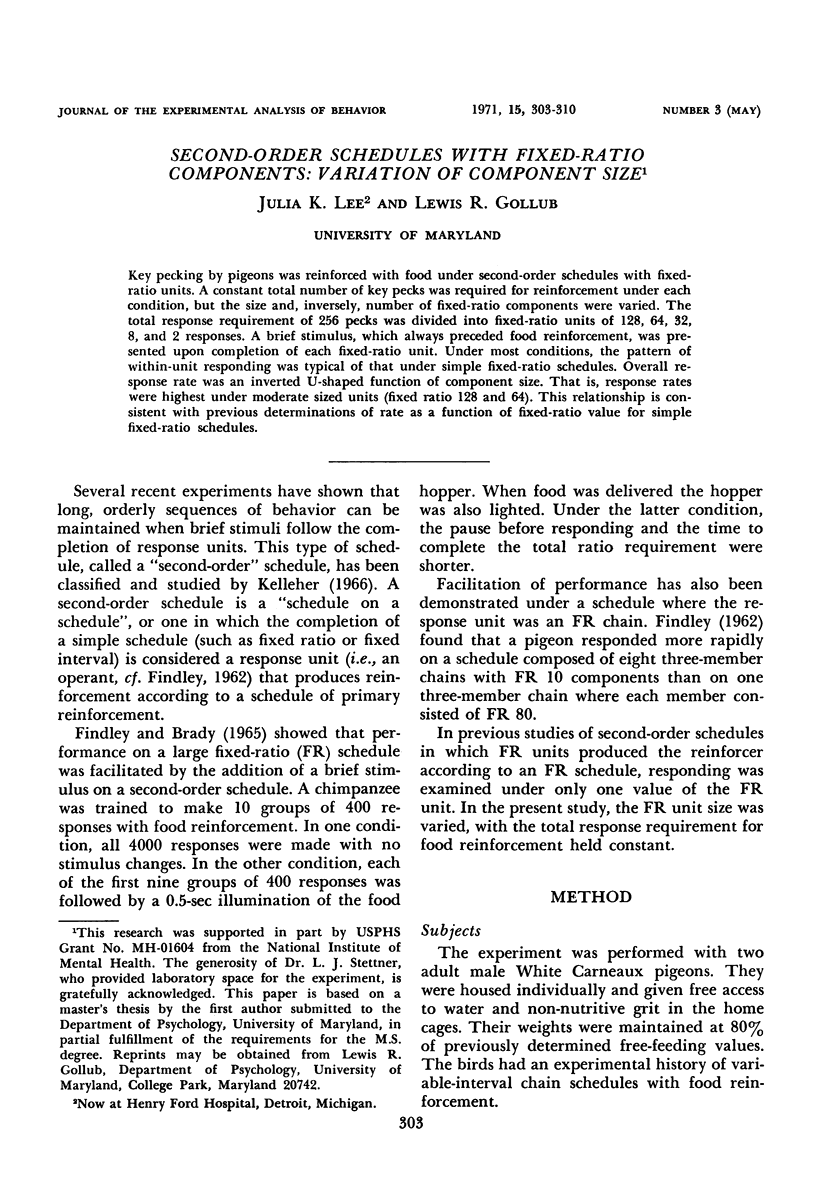
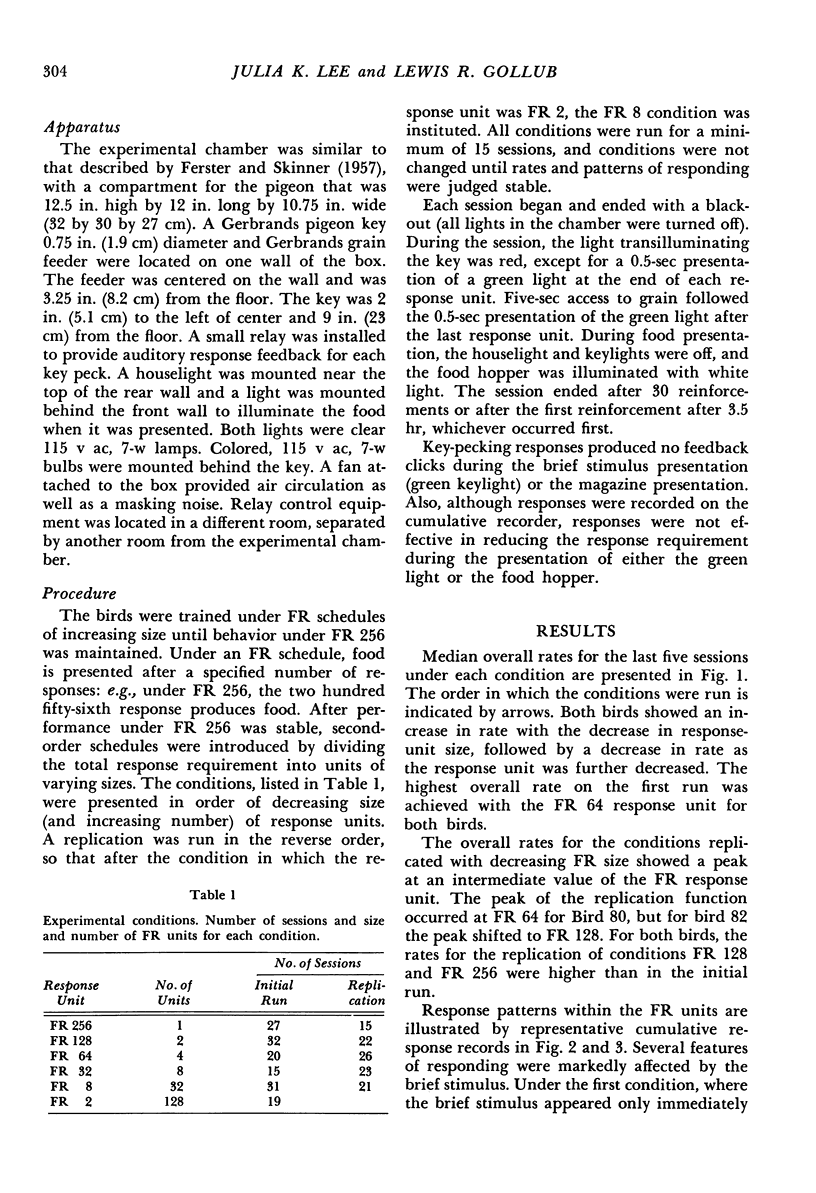
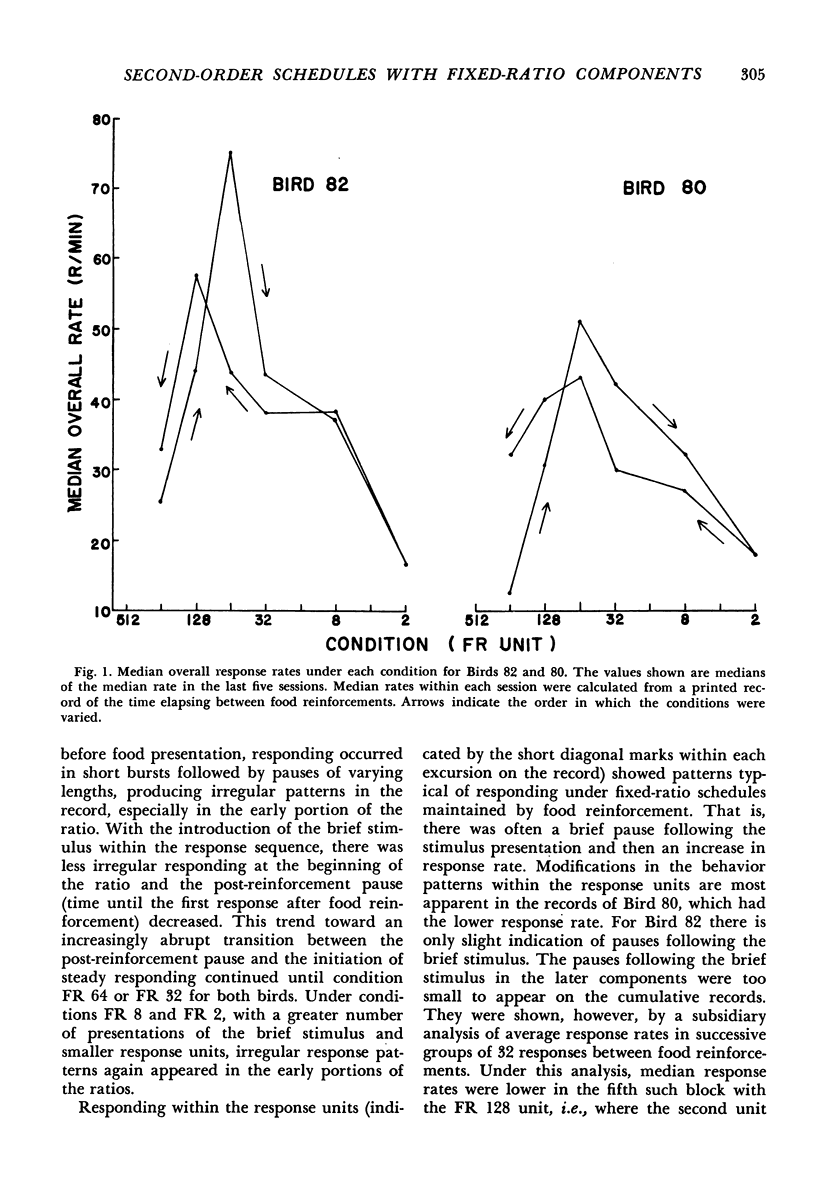
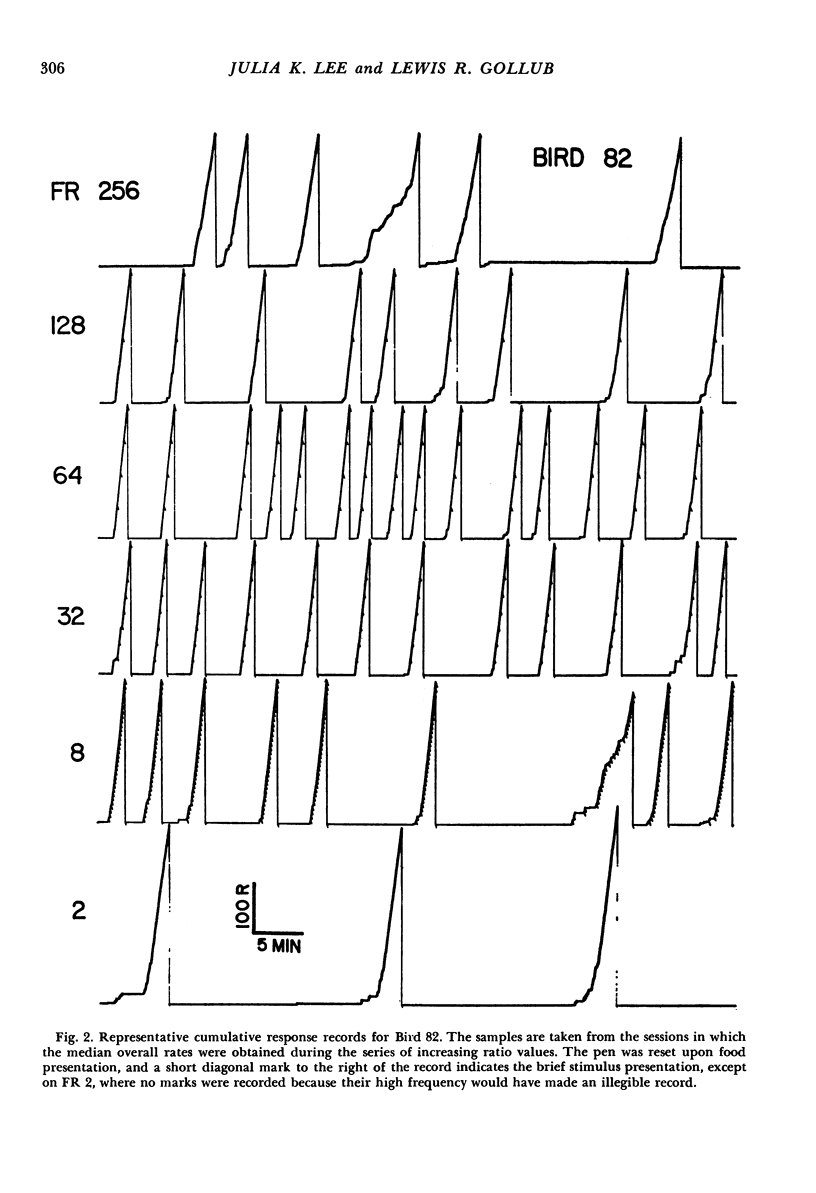
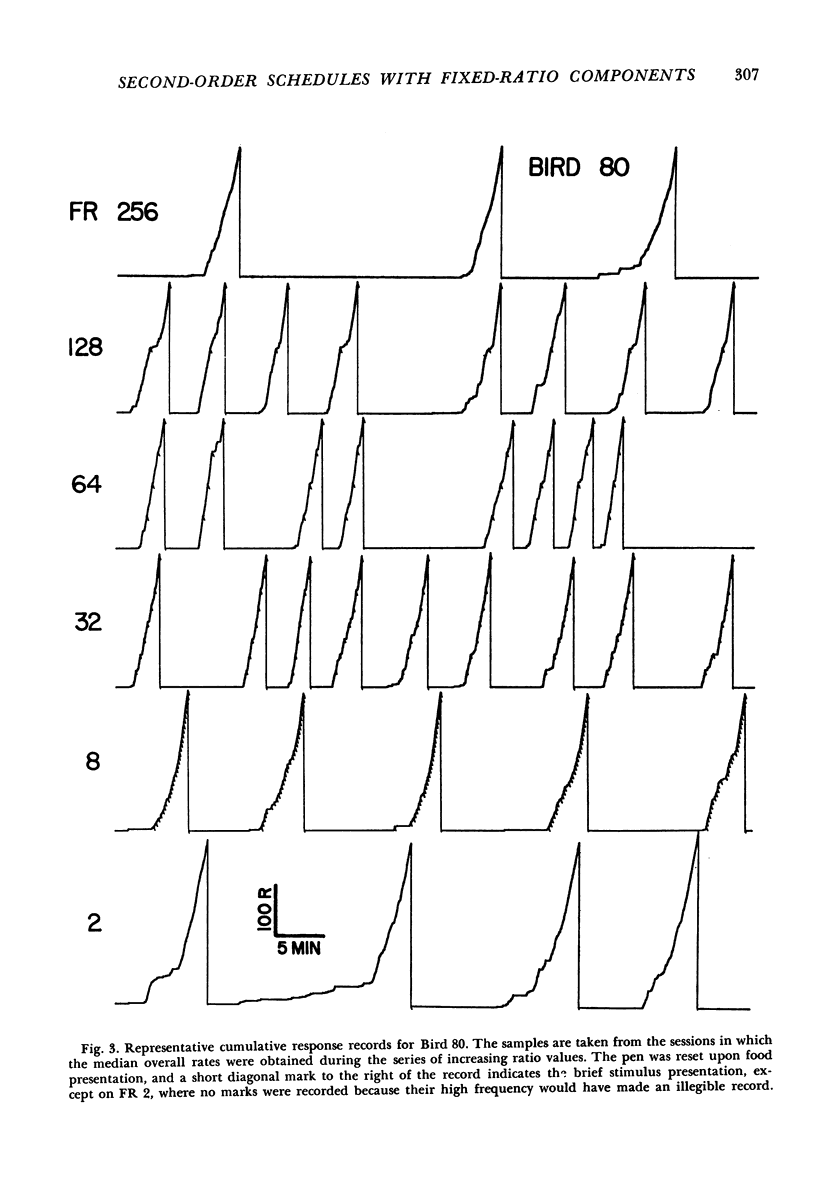
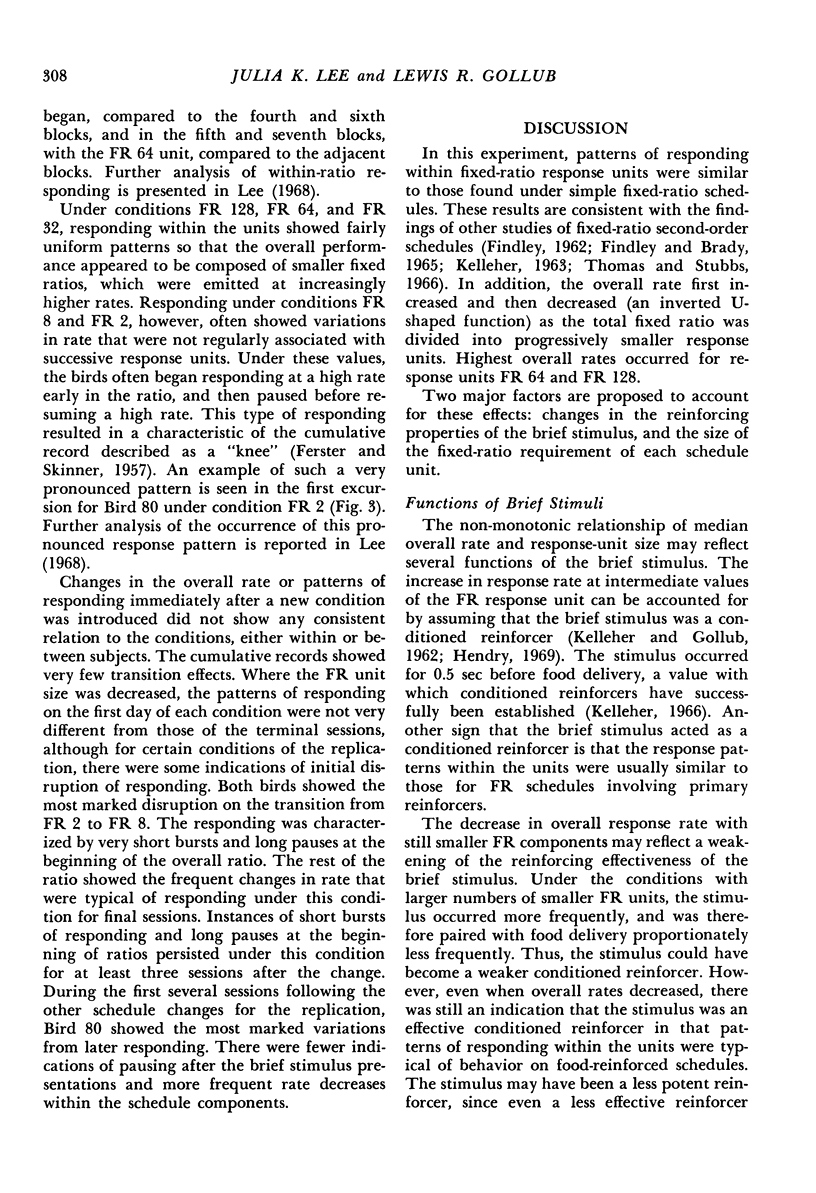
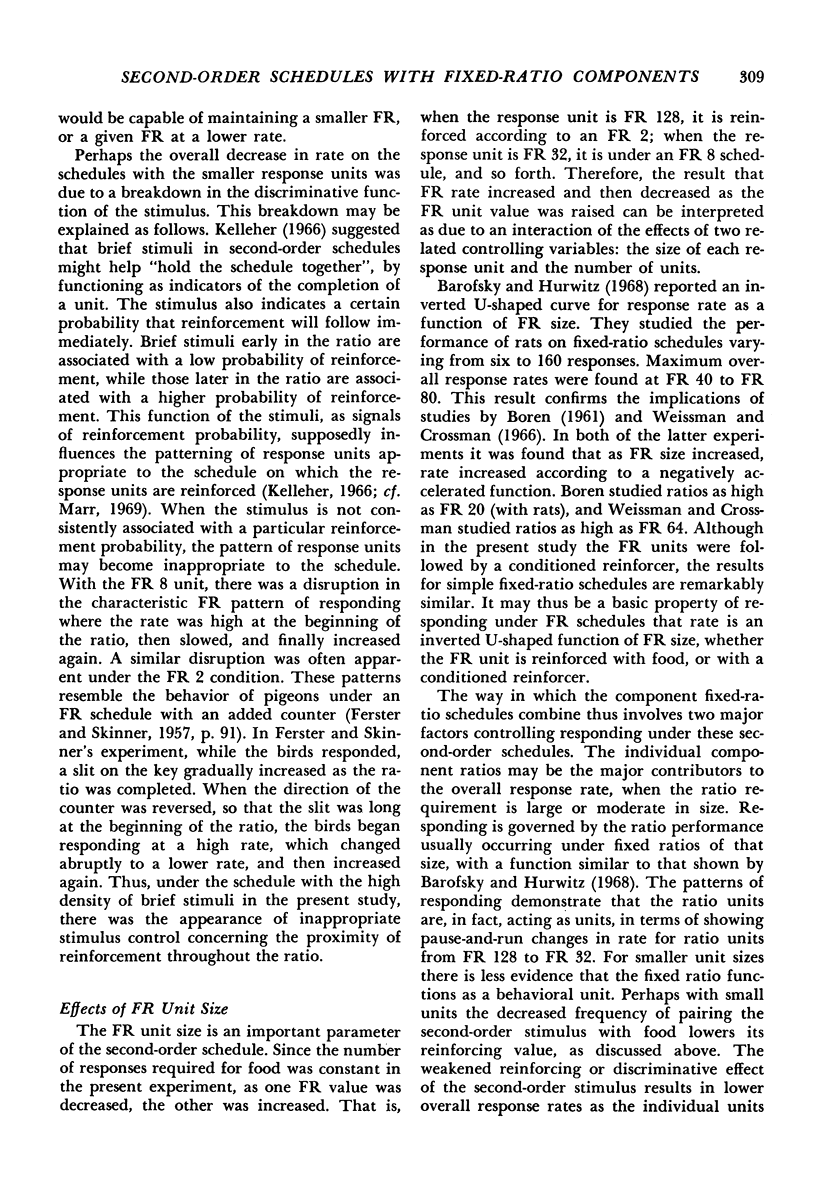
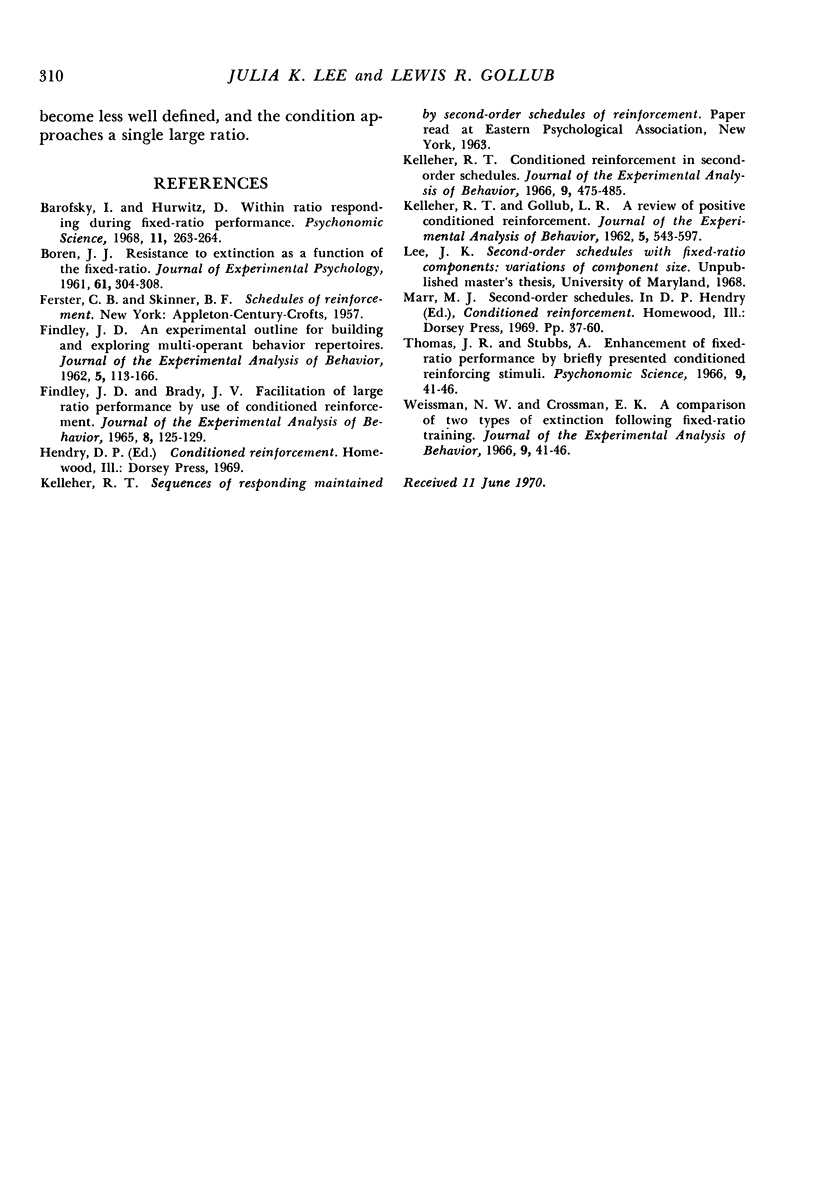
Selected References
These references are in PubMed. This may not be the complete list of references from this article.
- FINDLEY J. D. An experimental outline for building and exploring multi-operant behavior repertoires. J Exp Anal Behav. 1962 Jan;5(Suppl):113–166. doi: 10.1901/jeab.1962.5-s113. [DOI] [PMC free article] [PubMed] [Google Scholar]
- FINDLEY J. D., BRADY J. V. FACILITATION OF LARGE RATIO PERFORMANCE BY USE OF CONDITIONED REINFORCEMENT. J Exp Anal Behav. 1965 Mar;8:125–129. doi: 10.1901/jeab.1965.8-125. [DOI] [PMC free article] [PubMed] [Google Scholar]
- KELLEHER R. T., GOLLUB L. R. A review of positive conditioned reinforcement. J Exp Anal Behav. 1962 Oct;5:543–597. doi: 10.1901/jeab.1962.5-s543. [DOI] [PMC free article] [PubMed] [Google Scholar]
- Kelleher R. T. Conditioned reinforcement in second-order schedules. J Exp Anal Behav. 1966 Sep;9(5):475–485. doi: 10.1901/jeab.1966.9-475. [DOI] [PMC free article] [PubMed] [Google Scholar]
- Weissman N. W., Crossman E. K. A comparison of two types of extinction following fixed-ratio training. J Exp Anal Behav. 1966 Jan;9(1):41–46. doi: 10.1901/jeab.1966.9-41. [DOI] [PMC free article] [PubMed] [Google Scholar]


